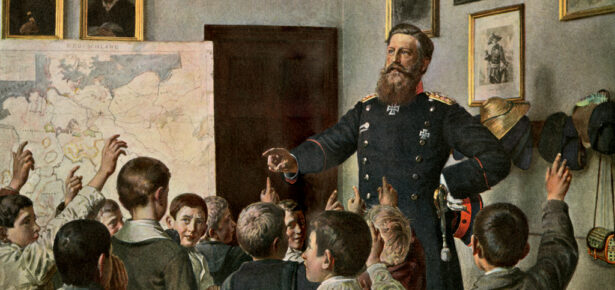
In the German elections of 1912, the Social Democrats emerged as the largest party in the Reichstag. When assessing what this meant for a proud imperial monarchy led by as bombastic a figure as Emperor Wilhelm, the political commentator Friedrich Naumann calmly concluded that things would work out just fine. The Kaiser would simply learn to live with this new reality. “Monarchs need majorities”, Naumann observed. Their existence depended on people’s belief that crowned heads are needed. Without this belief, the writer declared, “even the most ancient of hereditary rights will be of no use.”
This commentary, taken from the very end of the long nineteenth century, encapsulates some of the key issues addressed in my book “Royal Heirs”: the surprising survival of Europe’s monarchical systems right through a century that witnessed the birth of High Modernity, the monarchies’ need to craft a persuasive narrative about their positive contribution to the life of the people, and the acknowledgement that – notwithstanding all the grandiloquent references to divine grace and royal lineage – thrones now rested on majority support. Even some of the crowned heads themselves acknowledged this. “In the olden days, divine grace may have been enough”, Grand Duke Ernst Ludwig of Hessen-Darmstadt conceded, “but now a monarch has to show through his work that he deserves his position, just like any other person in their place.”
“Royal Heirs” explores how European monarchies managed to survive the dramatic political, technological, social, and cultural changes that characterised the epoch between the French Revolution and the end of the Great War. It does so by focusing on the figures that literally embodied the future of the monarchy: the royal heirs. Now that monarchs had to win over their subjects – rather than simply commanding their loyalty – the next-in-line emerged as a powerful tool for shaping and communicating the royal story and thus for giving it a future.
Heirs stood for continuity and change; they were part of a heart-warming tale of family virtue and educational achievement; they travelled the world and looked great on photographs; they cut a fine figure in dashing uniforms; above all: they generated soft power that their dynasties could deploy as the monarchical grip on the levers of hard power continued to weaken.
Drawing on the lives, loves and labours of several generations of royal heirs, representing more than a dozen European monarchies, my book explains how Europe’s monarchies – reeling from the impact of the revolutions and the manifold effects of modernisation – sought to change everything, to ensure that everything remained the same. For the future monarchs, this meant that they had to embody the virtues of constitutional progress, navigate the difficult emotional waters of a public family life, and adapt to the new demands of a modern princely education – while learning to generate “soft power”. At the same time, the ancient royal duty of military prowess had to be displayed with undiminished lustre – even into the carnage of the First World War which brought Europe’s last monarchical century to a brutal end.
Insightful contemporaries were fully aware of the useful role royal heirs could play to stabilise nineteenth-century monarchies. “There has been no period in the world’s history at which successors to the Monarchy could more efficaciously contribute to a great historical system dependent even more upon love than upon strength”, William Gladstone wrote to the heir to the British throne in 1885. Rather pointedly, he reminded the rather feckless recipient of his letter that this would have to be achieved through “devotion to their duties, and by a bright example to the country.”
The mechanisms that Europe’s late modern monarchies devised and perfected in the long nineteenth century to ensure their survival in an age of growing publicity and rapid change proved remarkably successful. When the continent went to war in 1914 – more than 120 years after the execution of King Louis XVI of France – all but three European states had crowned heads. Another century and 223 million Netflix subscriptions later, we may well ask whether there is ever any escape from Jean-Baptiste Karr’s famous epigram: “Plus ça change, plus c’est la même chose.”
Latest Comments
Have your say!